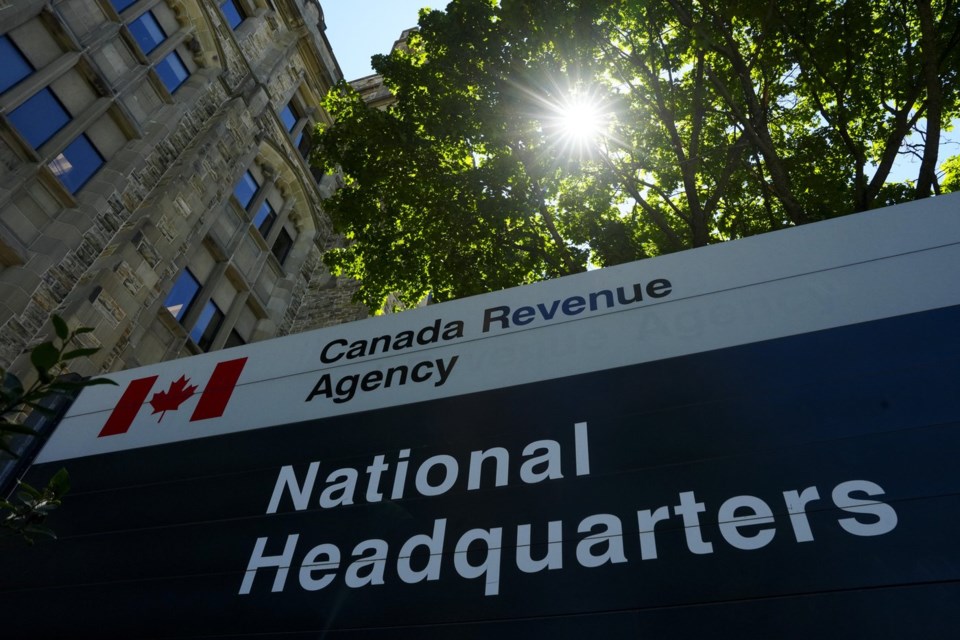OTTAWA — The federal public service shed almost 10,000 people last year, with the Canada Revenue Agency and Immigration, Refugees and Citizenship Canada losing the most employees.
The last time the public service contracted was in 2015, when the number of people employed dropped just slightly from 257,138 to 257,034.
The number of public servants employed by the federal government fell from 367,772 to 357,965 over the last year.
The CRA lost 6,656 employees between 2024 and 2025, dropping from 59,155 to 52,499. The size of the Immigration, Refugees and Citizenship Canada workforce fell from 13,092 to 11,148, a loss of 1,944 employees.
The Public Health Agency of Canada lost 879 employees, Shared Services Canada dropped 608 employees, Health Canada lost 559 and the Canadian Food Inspection Agency lost 453.
Some departments and agencies saw their workforces expand over the past year. The RCMP hired another 911 public servants, Elections Canada hired another 479, National Defence hired an extra 381 and Global Affairs Canada took on another 218.
The data does not include employees on leave without pay, locals employed outside of Canada, RCMP regular force and civilian members, Canadian Armed Forces members, employees of the National Capital Commission and those who work for the Canadian Security Intelligence Service.
Most of those who lost their jobs were "term" employees — people hired for a limited period of time. Between 2024 and 2025, the public service lost almost 8,000 term employees.
The government also dropped almost 3,000 casual employees — people who can't be employed by any one government department or agency for more than 90 days — and 1,750 students.
The number of permanent federal public service employees increased by about 2,700 last year.
More than three-quarters of the people who left the federal public service last year were under the age of 35.
Of those who lost their jobs, 4,413 were between the ages of 25 and 29, another 3,354 were between the ages of 20 and 24, 563 were aged 30 to 34 and 246 were under 20.
Lori Turnbull, a professor of political science at Dalhousie University, said it's not surprising that most of the positions eliminated were term positions — short-term positions that don't have to be renewed.
"These contract positions are often vehicles for entry into the public service," Turnbull said.
David McLaughlin, executive editor of Canadian Government Executive Media and former president and CEO of the Institute on Governance, said term employees and younger staffers are the easiest people for governments to cut.
"If you're paying people out, they don't require big packages, so they are the easiest, cheapest employees to let go," he said.
But by dropping younger employees whose careers are just beginning, he said, the government risks missing out on the kind of cultural change and innovation the public service badly needs.
"You run the longer-term risk by letting go younger people who may be dedicating their careers and to public service," he said. "You are simply reinforcing the older sub-performers that may exist in the public service.
"I would not recommend this as an approach to resolving public service spending."
The government spent $43.3 billion on public servants' salaries in 2023-24, according to the parliamentary budget officer. It spent a $65.3 billion on all employee compensation, including pensions, overtime and bonuses.
PBO data also indicates that, in 2023, the average salary for a full-time public servant was $98,153.
The Treasury Board of Canada Secretariat said it could not provide an average salary for public servants for 2024 or 2025.
Public service employees have been braced for layoffs since the previous Liberal government launched efforts to refocus federal spending in 2023.
In the 2024 budget, the previous government said it expected the public service population to decline by around 5,000 full-time positions over the subsequent four years.
It also said that, starting on April 1, 2025, departments and agencies would be required to cover a portion of increased operating costs with existing resources.
Prime Minister Mark Carney has vowed to cap, not cut, the federal public service, though his government has given little indication of what that might entail. The prime minister also has promised to launch a "comprehensive" review of government spending with the aim of increasing its productivity.
Hundreds of workers in the Canada Revenue Agency, Employment and Social Development Canada and Immigration, Refugees and Citizenship Canada have been laid off recently.
Those organizations also saw their numbers increase during the pandemic years.
Turnbull said that, with the pandemic over and immigration numbers being scaled down, the federal government sees this downsizing as "logical."
McLaughlin, meanwhile, warned that downsizing only offers "episodic savings" and wondered whether service delivery can keep up with demand.
This report by The Canadian Press was first published June 13, 2025.
Catherine Morrison, The Canadian Press




